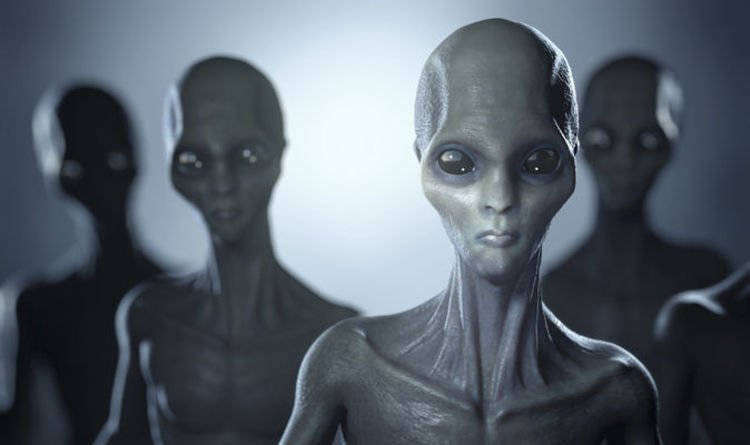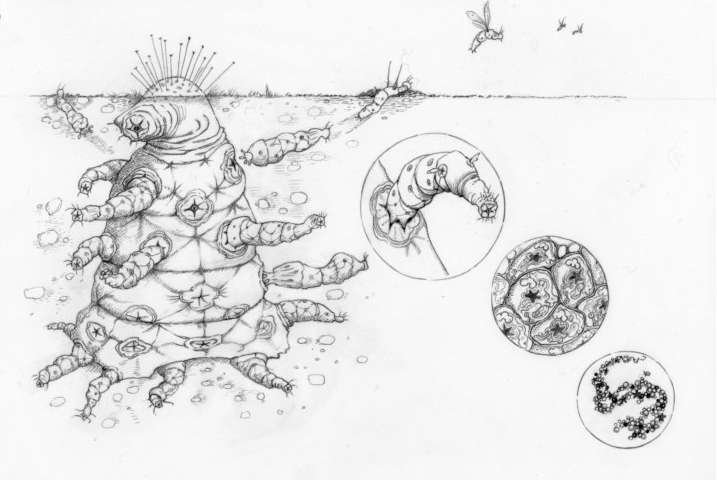MessageToEagle.com – What do aliens look like? No-one knows and all we have are speculations. Making predictions about extraterrestrials is very difficult because we only have one example of life – life on Earth—to extrapolate from.
According to some scientists from the University of Oxford, aliens may be more human-like than we think. In a new study published in the International Journal of Astrobiology researchers show for the first time how evolutionary theory can be used to support alien predictions and better understand their behavior.
They show that aliens are potentially shaped by the same processes and mechanisms that shaped humans, such as natural selection.
The theory supports the argument that foreign life forms undergo natural selection, and are like us, evolving to be fitter and stronger over time.
“A fundamental task for astrobiologists (those who study life in the cosmos) is thinking about what extra-terrestrial life might be like. But making predictions about aliens is hard. We only have one example of life – life on Earth—to extrapolate from.
Past approaches in the field of astrobiology have been largely mechanistic, taking what we see on Earth, and what we know about chemistry, geology, and physics to make predictions about aliens,” Sam Levin, a researcher in Oxford’s Department of Zoology said.
“In our paper, we offer an alternative approach, which is to use evolutionary theory to make predictions that are independent of Earth’s details. This is a useful approach, because theoretical predictions will apply to aliens that are silicon based, do not have DNA, and breathe nitrogen, for example.”
Major transitions in space: ‘The Octomite’. A complex alien that comprises a hierarchy of entities, where each lower level collection of entities has aligned evolutionary interests such that conflict is effectively eliminated. These entities engage in division of labor, with various parts specializing on various tasks, such that the parts are mutually dependent. Credit: University of Oxford
Using this idea of alien natural selection as a framework, the team addressed extra-terrestrial evolution, and how complexity will arise in space.
Species complexity has increased on the Earth as a result of a handful of events, known as major transitions. These transitions occur when a group of separate organisms evolve into a higher-level organism – when cells become multi-cellular organisms, for example. Both theory and empirical data suggest that extreme conditions are required for major transitions to occur.
See also:
Invisible Aliens: Extraterrestrial Life May Be Beyond Human Understanding
More About Extraterrestrial Life
The paper also makes specific predictions about the biological make-up of complex aliens, and offers a degree of insight as to what they might look like.
Sam Levin added: “We still can’t say whether aliens will walk on two legs or have big green eyes. But we believe evolutionary theory offers a unique additional tool for trying to understand what aliens will be like, and we have shown some examples of the kinds of strong predictions we can make with it.
Picture an alien. These illustrations represent different levels of adaptive complexity we might imagine when thinking about aliens. (a) A simple replicating molecule, with no apparent design. This may or may not undergo natural selection. (b) An incredibly simple, cell-like entity. Even something this simple has sufficient contrivance of parts that it must undergo natural selection. (c) An alien with many intricate parts working together is likely to have undergone major transitions. Credit: University of Oxford
“By predicting that aliens undergone major transitions – which is how complexity has arisen in species on earth, we can say that there is a level of predictability to evolution that would cause them to look like us.
“Like humans, we predict that they are made-up of a hierarchy of entities, which all cooperate to produce an alien. At each level of the organism there will be mechanisms in place to eliminate conflict, maintain cooperation, and keep the organism functioning. We can even offer some examples of what these mechanisms will be.
“There are potentially hundreds of thousands of habitable planets in our galaxy alone. We can’t say whether or not we’re alone on Earth, but we have taken a small step forward in answering, if we’re not alone, what our neighbors are like.”
MessageToEagle.com
Expand for references







